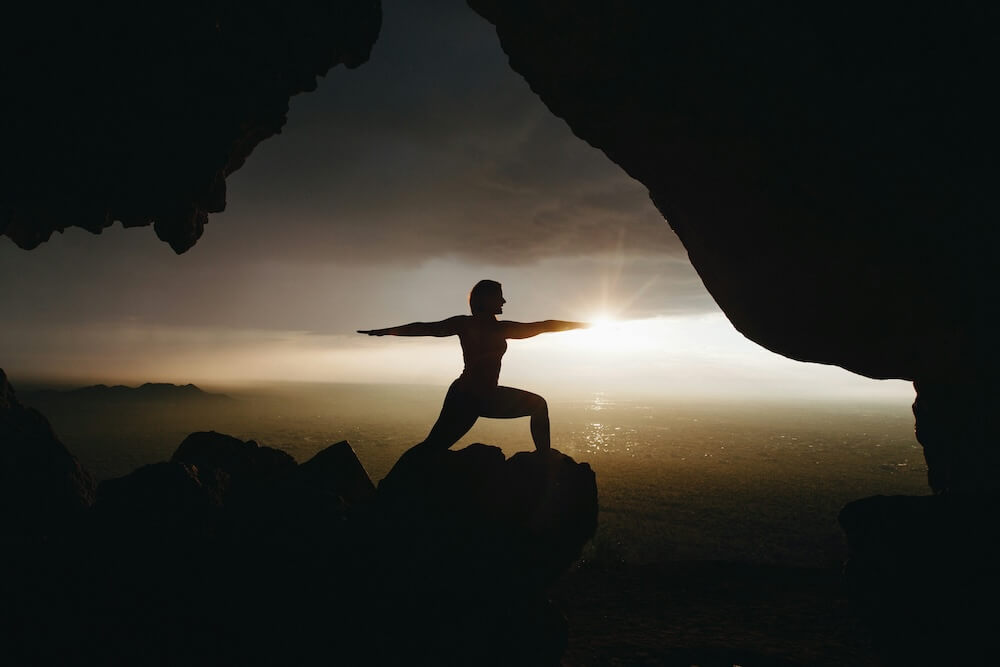A good night’s sleep is essential for overall health, and yoga can be a powerful tool to help you unwind and prepare for bed. A consistent yoga practice can ease tension, promote relaxation, and improve the quality of your sleep.
By incorporating specific yoga poses and creating a calming sleep environment, you can transform your nightly routine and enhance your overall well-being. Here are some poses and tips for a pre-sleep yoga routine:
Recommended Poses
Reclining Hero Pose (Supta Virasana): This pose stretches the thighs and relaxes the body, making it a perfect addition to your pre-sleep routine. To perform this pose, sit between your heels and lean back, gradually resting on your back. You can use a bolster or pillow for added support if needed. Focus on your breathing and allow the tension in your legs and hips to melt away.
Supine Spinal Twist (Supta Matsyendrasana): Twists are excellent for releasing tension in the spine and promoting relaxation. Lie on your back, bend one knee, and cross it over your body while extending your opposite arm to the side. This gentle twist helps to release any built-up stress in your back and shoulders, preparing your body for a restful night.
Butterfly Pose (Baddha Konasana): This pose opens the hips and calms the mind, making it ideal for winding down before bed. Sit with the soles of your feet together and let your knees fall to the sides. You can lean forward slightly to deepen the stretch or stay upright, depending on what feels comfortable. Focus on deep, even breaths to enhance the calming effect.
Child’s Pose (Balasana): Child’s Pose is a gentle way to relax before sleep. Sit back on your heels, extend your arms forward, and rest your forehead on the mat. This pose helps to release tension in the back and shoulders while promoting a sense of calm and grounding.
Seated Forward Bend (Paschimottanasana): This pose is great for calming the nervous system. Sit with your legs extended straight in front of you, and reach forward to touch your toes. If you can’t reach your toes, don’t worry; simply reach as far as you can while maintaining a straight spine. This stretch helps to release tension in the lower back and hamstrings.
Legs-Up-The-Wall Pose (Viparita Karani): This pose reduces anxiety and promotes relaxation by encouraging blood flow to the upper body. Lie on your back with your legs extended up a wall. This position is deeply relaxing and can help to reduce swelling in the legs and feet after a long day.
Corpse Pose (Savasana): Conclude your routine with Corpse Pose, which offers deep relaxation. Lie flat on your back with your arms at your sides, palms facing up. Focus on deep, rhythmic breathing and allow your entire body to relax completely. This final pose helps to integrate the benefits of your practice and prepare your mind and body for sleep.

Additional Tips
In addition to these yoga poses, creating a calming sleep environment can significantly enhance your ability to fall asleep and stay asleep. Here are some tips to help you set the stage for a restful night:
Dim the Lights: Lowering the lights in the evening signals your body that it’s time to wind down. Consider using dimmer switches or soft lighting to create a relaxing atmosphere.
Reduce Noise: Use earplugs or a white noise machine to block out disruptive sounds. Consistent, gentle background noise can help to mask any sudden sounds that might disturb your sleep.
Create a Routine: Stick to a regular bedtime routine to train your body for sleep. Consistency helps to regulate your internal clock, making it easier to fall asleep and wake up at the same time each day.
Aromatherapy: Use calming scents like lavender to enhance relaxation. You can use essential oils in a diffuser, apply them to your pillow, or incorporate them into your bedtime routine with a relaxing bath or massage.
Conculsion
By incorporating these yoga poses and tips into your nightly routine, you can create a peaceful transition from the busyness of the day to the tranquility of sleep. Regular practice can lead to improved sleep quality, reduced stress, and overall better health. Taking time for yourself before bed not only nurtures your body but also soothes your mind, preparing you for a deep and restorative sleep.
In addition to the physical benefits, the mindful breathing and meditative aspects of yoga can significantly impact your mental and emotional well-being. As you develop this pre-sleep ritual, you may find yourself waking up more refreshed and energized, ready to face the challenges of a new day. Embracing these practices can transform your nights and, ultimately, your life.
Remember, consistency is key. The more you practice, the more your body will respond to these gentle cues for relaxation. So, unroll your mat, take a deep breath, and let the calming journey of yoga guide you to a better night’s sleep. Sweet dreams and namaste.



